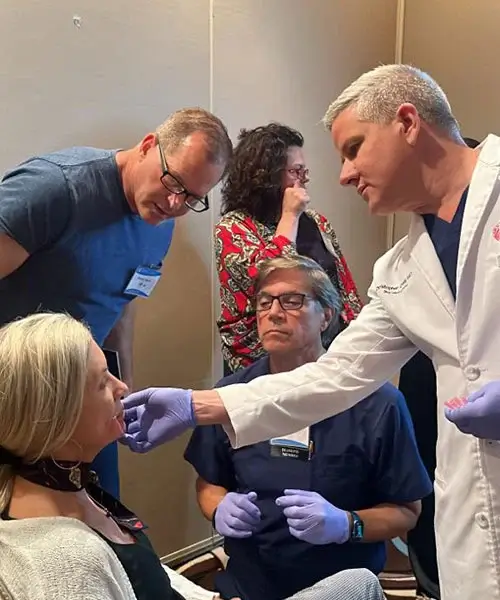Fix a Droopy Nose: Effective Solutions Revealed
By Dr. Stephen Cosentino
PRESIDENT OF EMPIRE MEDICAL TRAINING
Is your nose drooping these days?
It happens. In fact, millions of Americans have this particular cosmetic complaint.
Drooping nose, and specifically droopy nose tip, affects people across all age and demographic groups. But like many aesthetic issues, it’s more common among older folks.
The tip of the nose droops for a variety of reasons, the most common being:
- Age-related cartilage and collagen loss
- Too much cartilage in the area
- An overactive depressor septi nasi muscle, which can pull the nose tip downward
- Injury to the nose or surrounding facial muscles
No matter the cause, treatment is possible. Talk to your aesthetician or plastic surgeon about these four potential solutions for drooping nose.
How to Fix a Droopy Nasal Tip: 4 Treatment Options
Of these four solutions for nasal droop, only one is truly invasive: #4. However, nasal surgery is the most permanent and may produce the most noticeable results.
#2 and #3 are outpatient procedures that are generally well-tolerated, and #1 can be done in the comfort of your home.
1. Apply Makeup to the Nose Tip
This is the easiest, least expensive option. As you might guess, it’s also the least effective. In fact, depending on your nose shape and what’s causing the tip to droop, it might not work at all.
It doesn’t hurt to try though. Use a concealer shade that blends well with your nose tip’s skin tone (which may be different from your cheek tone) and apply evenly to add the appearance of volume to the area. You can try to add shading to create an upturned effect as well (and can always remove it if it doesn’t look right).
2. Get a Liquid Nose Job (Nose Botox)
“Liquid nose job” is the popular term for Botox® injection targeting the tip of the nose. Your injector, who should have completed botulinum toxin training with an accredited medical education provider, will target multiple injection sites on the depressor septi nasi muscle. These injections relax the muscle and lessen the pressure on the nose tip cartilages. The result is a noticeable lifting effect.
The procedure should take no more than 30 minutes in the clinic. Recovery time is minimal. Most patients return to normal activity the following day, and your provider will give you detailed instructions about post-procedure care (including potential side effects). Results are temporary though, with visible effects wearing off after three to four months in most cases.
3. Get a Hiko Nose Thread Lift
A Hiko nose thread lift is another minimally invasive procedure that lifts the tip of the nose. Unlike Botox, the dissolvable threads actually support the tip, which adds to the effect.
A Hiko nose thread lift may be paired with hyaluronic acid filler injections into the sides and bridge of the nose. This pairing can “soften” the lifting effect while adding volume to the nose as a whole. The effect is similar to plastic surgery, just not as permanent.
4. Consider Nose Surgery (Carefully)
If options #1 through #3 don’t deliver the results you seek, consider evidence-based nose surgery procedures for nasal tip support.
Known as rhinoplasty surgery, nose tip surgery produces durable results with relatively low risk (though it’s riskier than any of the other options mentioned here). Always work with a licensed, board-certified plastic surgeon and get two opinions if you can.


